You’re planning to launch a blog.
Or, you’re revamping an existing one.
How can you get thousands of visitors to your site when you first launch?
Most marketers set out with the goal of getting hundreds or thousands of eyeballs on their blog right after they publish their first post…
….but in actuality, most people end up publishing a few posts, sharing them on Facebook, Twitter, or LinkedIn, and looking at Google Analytics wondering why only a couple dozen friends ended up checking out their first article.

The reason most people fail at generating blog traffic right from the start is because they’re not thinking of launching their blog like they would launch a product.
For example, you wouldn’t spend a ton of time and effort building a new SaaS product only to launch it by sharing it with a few mutual friends on Facebook… would you?
I’ll just answer that for you…No, you wouldn’t.
You’d likely try to get awareness of your product by pitching it to publications, posting it to Product Hunt, posting it in Facebook groups, getting influencers to share your post, doing outreach, etc.
You’d have an entire game plan leading up to launch day.
This is called a product launch. In this post, I’m going to show you 3 case studies of how I did the same thing to launch 3 different blogs. We call this overall strategy the blog launch strategy.
I’ll share how we generated 20,000 unique visitors in a week with one post at ThinkApps, how we generated 1,878 unique visitors and 196 email subscribers in 2 weeks on this site, and how we generated a few thousand visitors at Vistage by using an influencer to help launch our blog.
My hope is these will give you actionable ideas you can use to launch or relaunch your own blog.
The Successful Blog Launch Strategy: Launch Your Blog like You Would Launch a Product
Most companies don’t go into their blog launch with a strategic plan that details how they’re going to generate the first waves of traffic from their intended audience.
Luckily, the strategic plan doesn’t have to be that complicated.
The blog launch strategy just requires two things:
- A unique post idea that’s hard for another company to replicate (a mega project, an opinion piece, a great narrative, etc.).
- A plan to get this great piece of content in front of a large amount of people (pitch to publications, enlist the help of an influencer in your space, or post your content in places you know your target audience hangs out).
In other words, you don’t want to launch your blog with a boring how-to post or listicle that any other site could create. You instead want to put some time and effort into coming up with a unique piece of content that immediately sets your company apart from the rest of the companies in your space.
Then after you’ve created this unique piece of content, you’ll want to do more than just share the post to your social channels and hope it gets traction. Instead, you’ll want to come up with a promotion game plan that will help you get this unique piece in front of a large portion of your target audience.
This is what the biggest bloggers do.
Here are three examples of these two steps combined together from different stages in my career.
How We Used a Mega Project to Get 200 High Quality Linking Domains and 20,000 Unique Visitors in a Week
When I ran marketing for ThinkApps, a software development company, we needed a way to get our blog off the ground. We had initially built an MVP version of our blog on WordPress where we bought a $40 WordPress theme and started publishing some content on the site. In the background, we were doing a full-site redesign and were going to launch a custom designed version of our new blog titled “BuildBlog by ThinkApps”.
(Side note: You can install a free theme from wordpress.com to begin your blogging journey. Just be cautious of whatever web hosting company you choose because migrating to a new provider can be a huge hassle.)
When our new blog was finished being designed and developed, we needed a way to kickstart the growth.
So here’s what we did:
After the announcement of the Apple Watch in 2014, we decided to create a mega project that showed concept artwork of what popular apps would look like on the Apple Watch.
We enlisted the help of some of the design agencies we worked with, and asked them to submit concept artwork for their favorite apps. The promise to them was that we would promote the content for them and help them get their artwork seen by tons of people, which in turn would help them promote their agency. But even we couldn’t have predicted the success of this one piece.
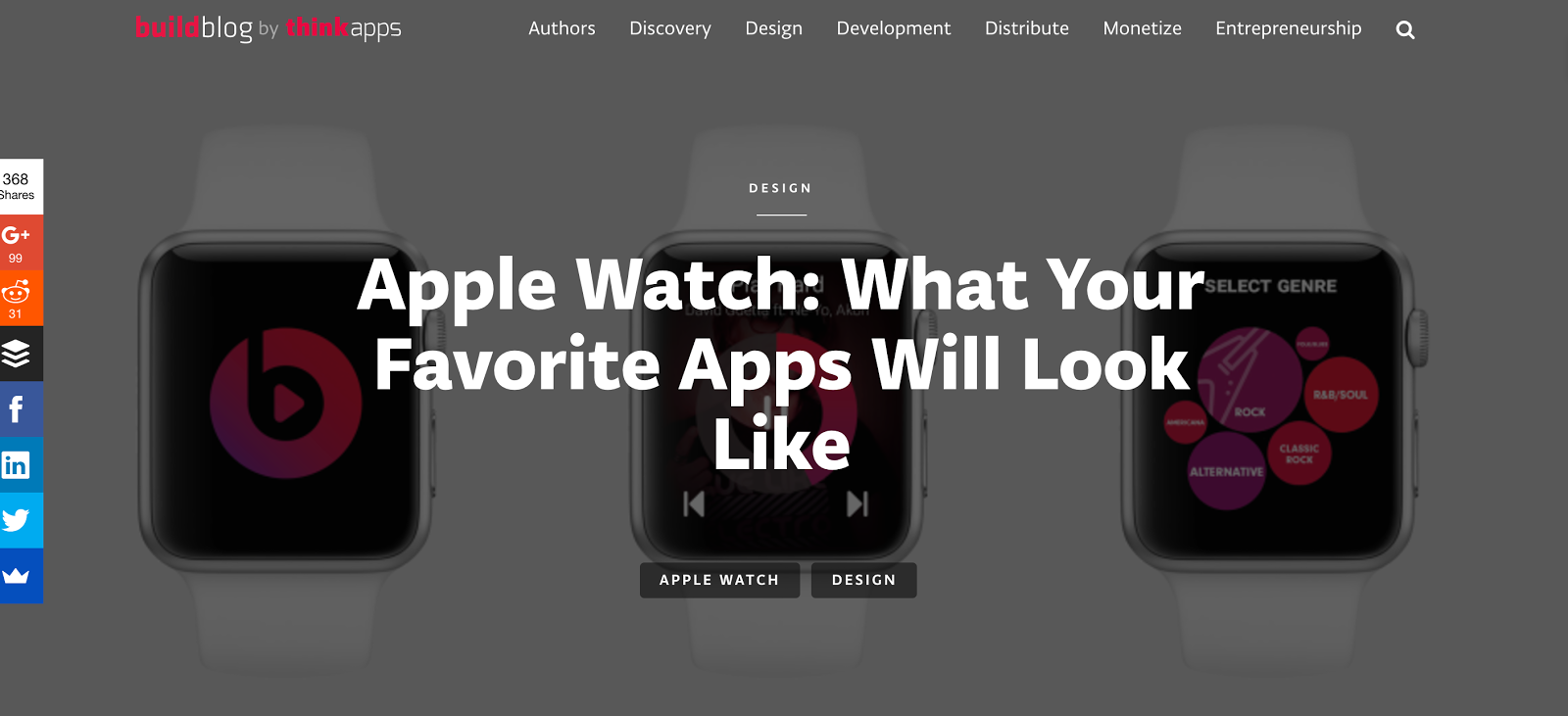
After all of the artwork was submitted, we turned their designs into a new blog post titled “Apple Watch: What Your Favorite Apps Will Look Like”.
This was step 1 of the blog product launch strategy: create unique, hard to replicate, quality content.
This wasn’t just some how-to piece on building an app that any rival agency could have written. We had good designers design concepts for real apps on the Apple Watch, something no one had done.
Now, on to Step 2: Promotion…
Prior to publishing the article, we reached out to every journalist who had covered the Apple Watch previously and pitched the piece to them. The morning after we published the piece, 9to5Mac picked up the article, and it was syndicated to over 200 tech and design publications, thus giving us over 200 high quality backlinks and over 20,000 unique visitors within a week of launch.
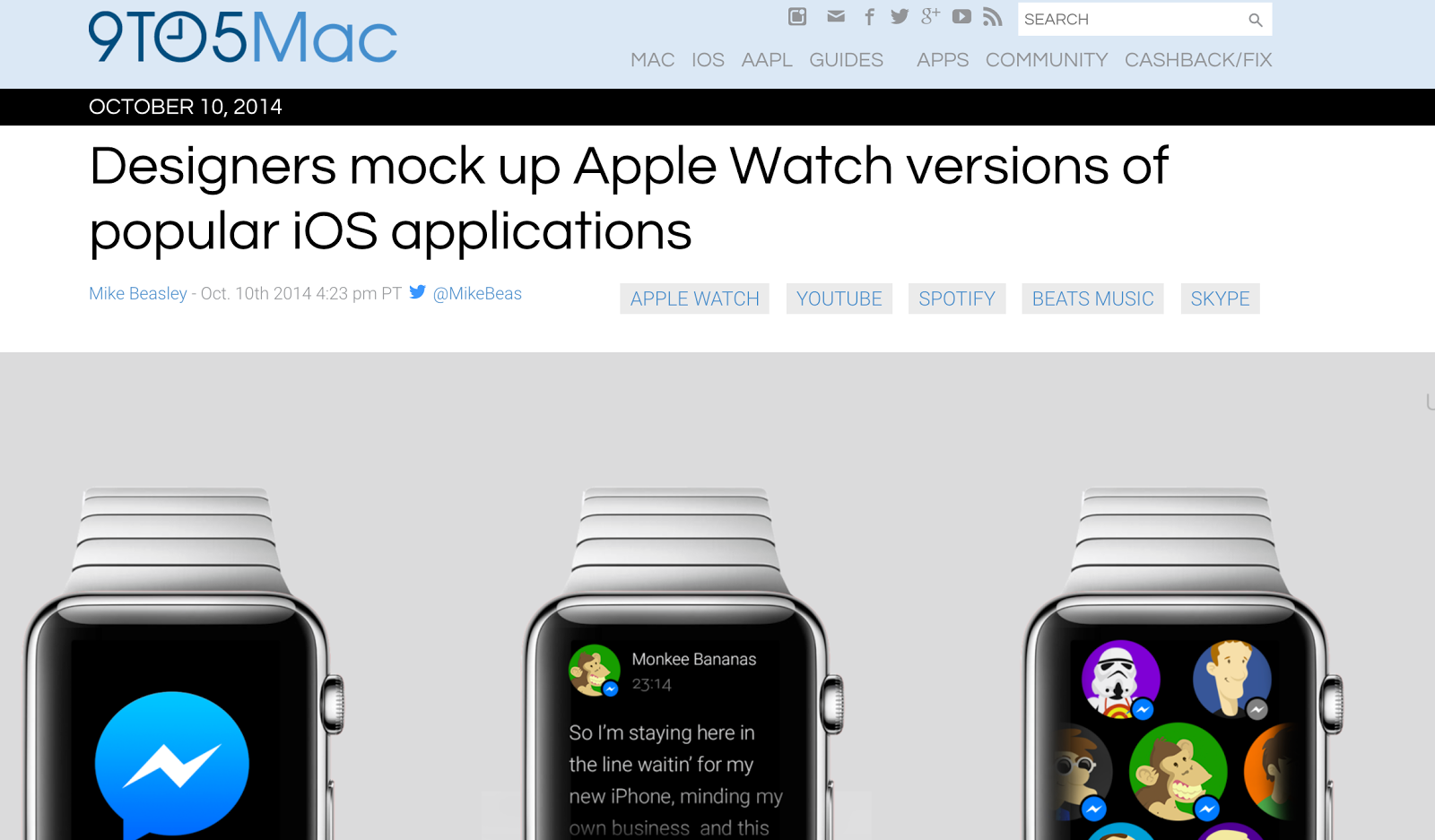
That one article served as the launching point for our blog, and then we doubled down on content marketing and grew our blog from 0-35,000 monthly unique visitors in 6 months.
Launching a Blog from Scratch: How We Used a Public Challenge to Drive 1,878 Unique Visitors and 196 Email Subscribers in 2 Weeks
The blog launch strategy doesn’t mean you have to invest in designers making cool app designs like ThinkApps (although, generally investing in some unique creative endeavor is a good sign that you’re on the right track to making unique, hard to replicate content.), and 20,000 unique visitors in a week isn’t required for a blog launch to be “successful” either.
We want to use this next example to show how you can simply do something yourself by creating a unique angle in your niche.
When we first launched our site Grow and Convert, we did a public challenge where we challenged ourselves to grow our brand new domain to 40,000 monthly unique visitors in 6 months. That was our uniqueness, most sites simply don’t make themselves vulnerable like this.
The first post we wrote was titled “Content Marketing Has Become Too Trendy: Here’s what we plan to do about it.”
The new post was an opinion piece that shared our point of view of what was wrong with content marketing, coupled with a challenge that people could follow. We promised to post updates on a monthly basis sharing how much our traffic and email list had grown each month. That’s it.
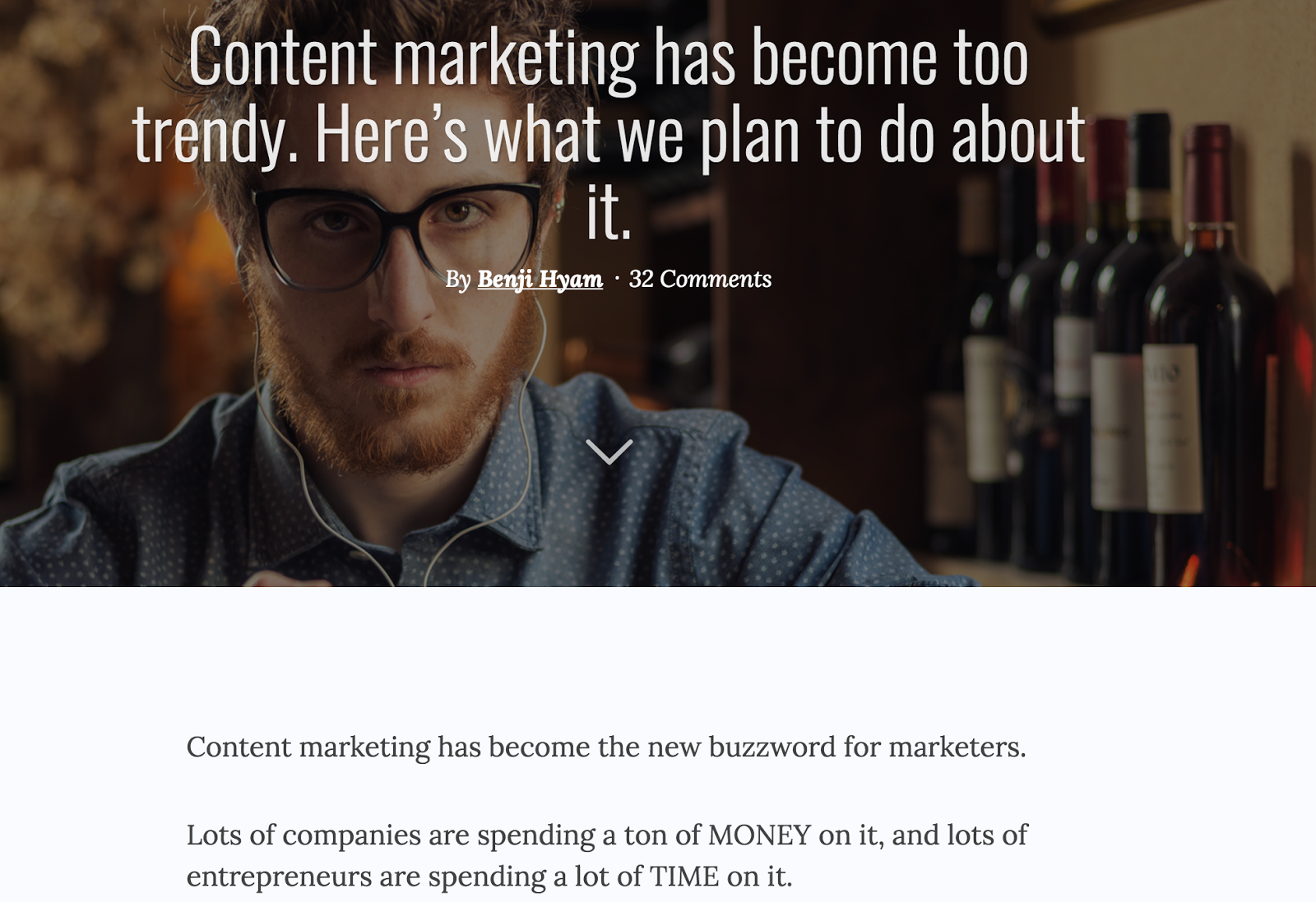
The reason this strategy worked to drive thousands of people to our site after it launched was because we attempted to do something that wasn’t easy in our industry, and we did it in a way so that people could follow along. It wasn’t world changing, and we’re not the first to transparently share our blog growth, but it was unique enough (in particular, we set a concrete time goal in addition to the traffic goal).
To accomplish Step 2 of the blog product launch strategy (promotion), we promoted all of the posts that outlined our 6 month challenge in communities where we knew marketers (our target market) hang out.
Here is a recap of what happened after our first two weeks after launching. (You can also see a step-by-step breakdown of how we drove traffic to our site in that first post.)
Naturally, people were excited about seeing if we succeeded or failed, as shown in the screenshot below.
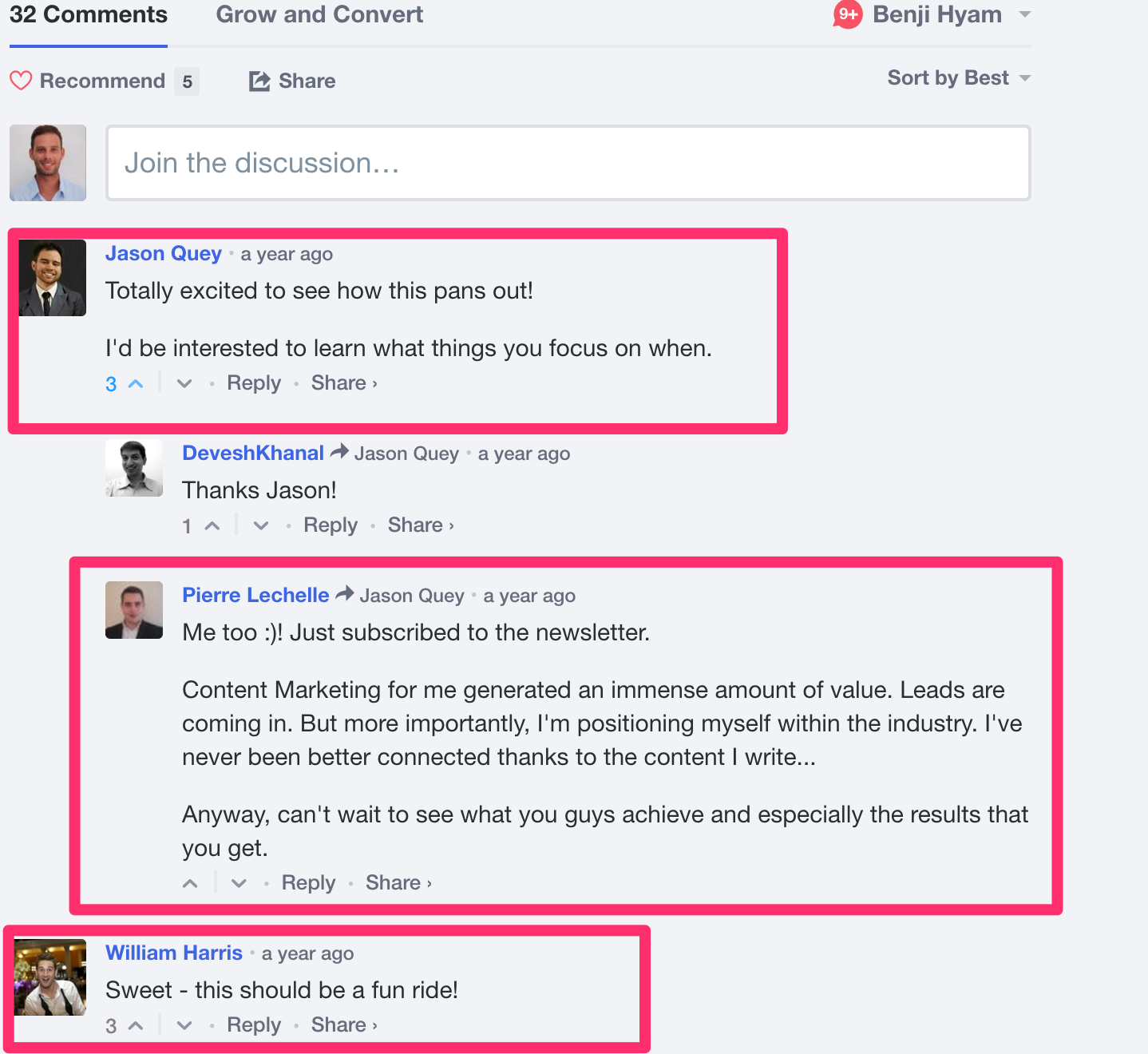
While we ended up pivoting away from our public challenge close to the end of the 6 months, we were able to drive 39,105 unique visitors to our site in 5 months because we had an engaged group of people who loved following our challenge.
How We Used Influencer Marketing to Relaunch a Company Blog and Drive Thousands of Visitors in the First Few Weeks
When I worked at Vistage Worldwide in 2011, I led the relaunch of our blog, which at the time was called “Vistage Buzz Blog”. We were only getting around 1,000 monthly unique visitors to our site despite having tons of great content published and the site being around for a while.
One of the main reasons we were having trouble growing our blog was because readers outside of our customer base didn’t trust our site as a reputable source of information for CEOs. The look and feel of our site gave off the notion that we only sent out company updates, company branded content, and opinions.
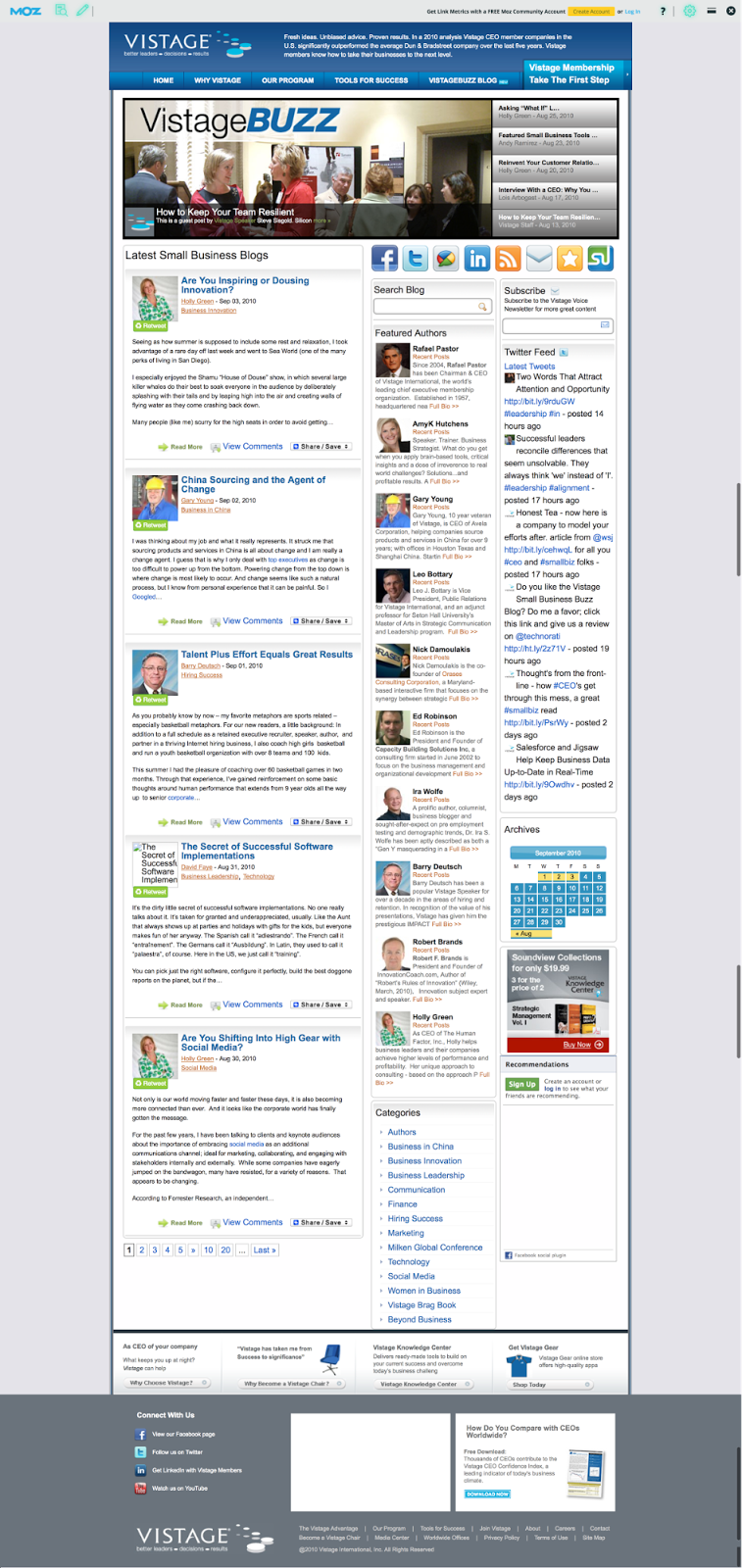
We made the decision to rebrand the site from “Vistage Buzz Blog” to “Executive Street” and remove a lot of the company branding from the site to give the look and feel of a media publication covering topics important to C-Level executives. Keep in mind that this design is from 2011. 🙂
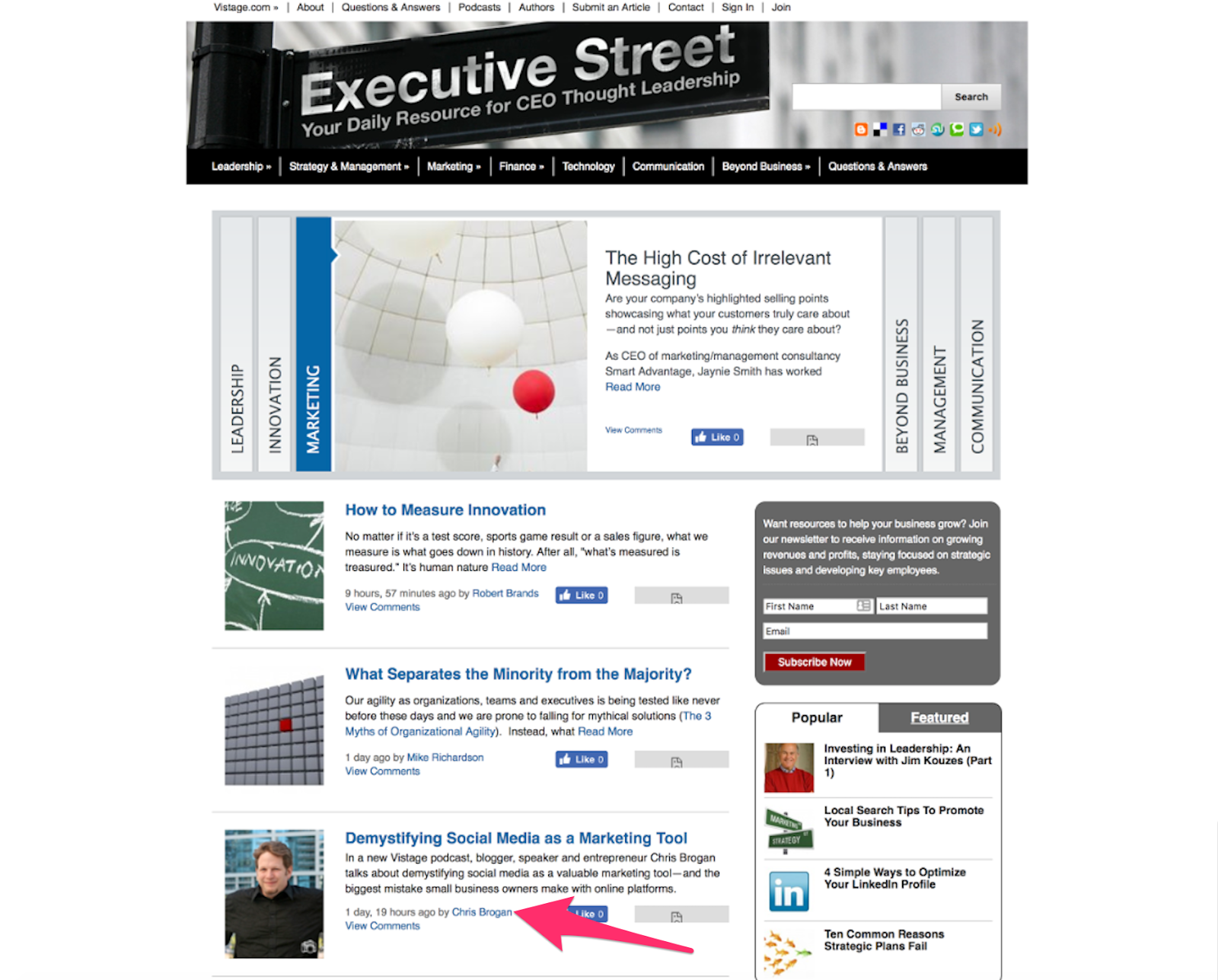
To launch this new brand to our audience (and the world), we enlisted the help of Chris Brogan. At the time, Chris had over 100,000 engaged Twitter followers and was one of the largest influencers on social media. He was also in the management coaching space, and therefore had the exact same audience that we were trying to attract for Vistage membership — CEOs and executives of large companies.
We reached out to him and asked if he’d like to attend an exclusive conference, for free, in exchange for writing 3 blog posts for us and sharing them with his audience. We coincided the launch of our new brand with the publishing of his first post.
On launch day, we published his first blog post on our newly launched blog and when he shared it with his audience on Twitter and via email, we attracted over 3,000 visitors on Day 1. Over the course of the week, the rest of his posts gave us awareness with an audience we didn’t previously have.
A year after launching this new brand, we were able to scale the blog from 1,000 to 20,000 monthly visitors, with the initial momentum coming from Chris’s guest post series on our site.
The nice part about the influencer strategy is that it can often check off both boxes of the blog product launch in one go. In our case, Chris Brogan’s articles were almost by definition unique, hard to replicate content (Step 1), because he’s an influencer in the space. Then, his existing audience served as the foundation for strategic promotion (Step 2).
When Launching a New Site, Come up with a Unique Idea That Will Make You Stand out Amongst Your Competitors
Although the blog launch strategy is a two step process as outlined above, I can’t emphasize enough that Step 1 is the most important. It’s also the key theme in all of the above examples: come up with a unique, hard-to-replicate idea for your blog launch (instead of, say, writing a standard ‘how-to’ post). Without this, promotion is going to be tough sledding — it’s just hard work to promote mediocre content.
So, think to yourself:
- What could you create that would make your readers say “Wow”
- Where could you distribute this unique piece to drive people back to your site? Could you leverage someone else’s audience to launch your blog?
Like this article? We produce stories like these for our clients, learn more here.








